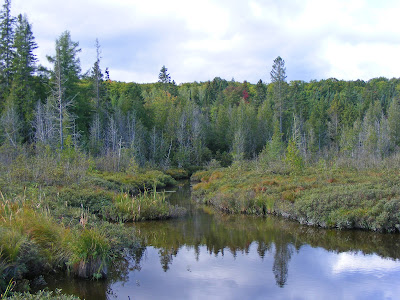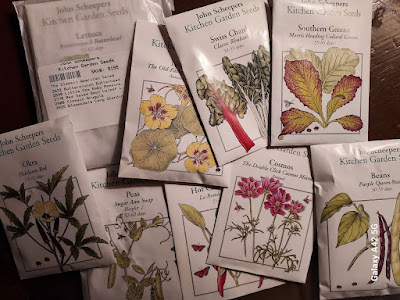 |
| Tuesday afternoon, 2/27/24, 64 degrees and sunny -- like a day in May! |
First, online sellers:
An increasing common trend on multiple-dealer book sites has to do with the so-called “descriptions” some dealers are attaching to books they offer for sale. For example, for one title I searched, a copy offered was graded as Good, the so-called “description” reading as follows:
Missing dust jacket; Pages can have notes/highlighting. Spine may show signs of wear.
I have italicized the words ‘can’ and ‘may’ to indicate my objection: The seller is simply giving a (partial) generic description to accompany the grade “good,” without reference to the particular copy beyond saying that it lacks a dust jacket. I don’t want to buy a book with highlighting! Has someone defaced the pages with highlighting or not? I understand that a book graded as “good” may show wear on the spine ends, but does this copy have worn ends, and if so, how bad are they?
By contrast, here is what can truly be called a description:
Clean and unmarked anywhere; front gutter cracked but binding firm; lovely engravings by author; unfaded green boards with gilt lettering and ornamentation on red patches well protected by pictorial dj that has chipping at edges, but protected from further wear by Brodart cover. Good in unclipped dj, plus Brodart jacket.
Both online dealers offer books for sale, but I would dignify only the second with the title ‘bookseller.’ Notice that both sellers have graded their copies (of the same title) as Good. Which copy would you feel more confident purchasing?
 |
| I am very happy with the copy I bought. |
Here is a general guideline for grading collectible books, with grades ranging from Very Fine (VG) down to Good (G). In general, used books not attractive to collectors but still desirable to readers or other book dealers may be given lower grades than Good, such as Fair; Poor; Binding Copy; or Reading Copy. Guides explain how to assign a grade, but only the seller can provide the specific information to explain how s/he arrived at that grade for a particular copy. Saying a copy “can” or “may” have such and such a flaw is not a description. It is a sign of unprofessionalism and laziness.
I stopped listing books for sale online when the site I listed with was bought by the behemoth and a different format put in place for uploading titles, as my old lists could not simply be transferred to the new format, and there was no one “at the other end” to help. Add to that my reality as a one-person operation, a “Mom&Pop” that was and is (even more so now) just “Mom.” With no second person on-site who could devote fulltime to uploading titles to be sold online, and then factoring in the “race to the bottom” for prices (one dealer would list a book for $15, the next would list the same book for $12, and so on down to $1.99), it wasn’t worth my time.
Given that race to the bottom on prices asked, along with the fact that processing an order for a $4 book is NO less time-consuming than processing an order for a $40 book (listing, delisting, packaging, shipping, and sometimes communicating with the buyer), you can see why sellers without traditional bookman standards would cut corners with their descriptions, but that's not the way I do business, and I prefer to deal with honest-to-goodness booksellers – preferably with open shops – who adhere to my standards. I don’t care to waste my time buying something I’ll be disappointed to receive – and that I wouldn’t want to sell to my own bookstore customers.
Now, to change the subject. I was going to add the notes below at the end of my February Books Read list, since three different books I read this month prompted these thoughts, but I decided to post them separately today and get it out of the way. Words to the wise!
Advice to Novelists and Wannabes
Beginning the novel: Beginning fiction writers often have a problem with getting their novels started, wanting to include too much backstory on every character. A good editor will tell them, “You need to know all that about your character, but your readers don’t.” A good model for filling in backstory with a sentence here and there is Walter Mosley. He is a master. Most editors coaching an otherwise wonderful novelist will help the writer overcome this problem, because the truth is, you can begin a story anywhere, and wherever you start will be the beginning.
 |
| This author is a great model for how to incorporate backstory. |
Ending the novel: A different problem is the unsatisfactory finish, because even readers who may persist hopefully through slow initial pages want a story that builds a strong narrative arc, reaches some sort of climax or epiphany or decisive moment – but doesn’t stop there, with the author suddenly slamming the door with a bang, whether or not on a tangle of loose ends! Ouch! Rats! Take the time to give us a metaphorical literary hug and murmur sweet nothings or at least wave goodbye, for heaven’s sake, before sauntering thoughtfully down the road. We don’t want to be dumped unceremoniously at the curb after spending all this time with you! That is very unkind! A comic novel, a tragic novel, a mystery will each have a different kind of denouement, but some kind each must have, if the reader is not to feel cheated.
 |
| Wednesday: Be ready for a whiteout without warning! Dress for wind chill! |

























